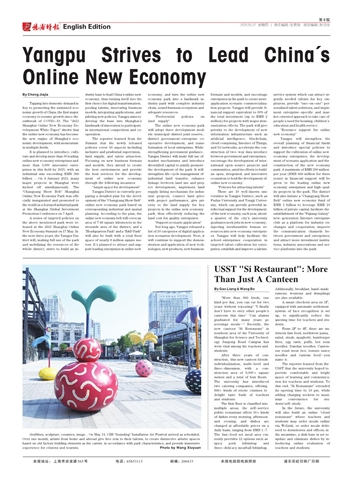By Gao Liang & Wang Bo
"More than 600 kinds, one kind per day, you can eat for two years without repeating" "I finally don't have to envy other people's canteens this time" "Can alumni graduated for many years go scrounge meals…" Recently, the new canteen "Si Restaurant" in southern area of the University of Shanghai for Science and Technology Jungong Road Campus has went viral among the teachers and students.
After three years of construction, this new canteen blends individualization, multi-level and three-dimension, with a construction area of 9,000+ square meters and a total of four floors. The university has introduced two catering companies, offering 600+ kinds of exotic cuisines to delight taste buds of teachers and students.
The first floor is classified into multiple areas, the self-service public restaurant offers 30+ kinds of dishes every morning, afternoon and evening, and dishes are changed at affordable prices on a daily basis, ranging from RMB 1-7. The fast-food set meal area currently provides 12 options such as spicy pork bibimbap and three-delicacy meatball bibimbap. Additionally, breakfast, hand-made ramens, wontons and dumplings are also available.
A smart checkout area on 1F, equipped with automatic settlement system of face recognition is set up, to significantly reduce the queuing time for teachers and students.
From 2F to 4F, there are nutritious fast food, northwest pasta, salad, steak, spaghetti, hamburger fries, egg tarts, puffs, hot sour noodles, Dandan noodles, Cantonese roast meat rice, tomato sauce noodles and various food…you name it.
The reporter learned from the USST that the university hoped to provide comfortable and bright space of learning and communication for teachers and students. To this end, "Si Restaurant" extended its opening time to 10 pm, while adding charging sockets to maximize convenience for students'self-study.
In the future, the university will also build an online "cloud restaurant" where teachers and students may order meals online via WeLink, or order meals delivered to dormitories and offices; in the meantime, a dish base is set to update and eliminate dishes by introducing online evaluation of teachers and students.

